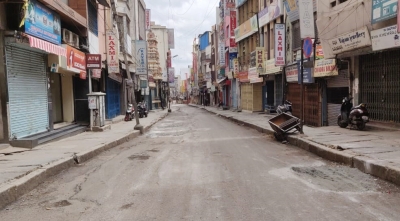States have once again begun imposing restrictions to prevent the spread of Covid-19 virus. For instance, Maharashtra, which is seeing the maximum number of cases, has announced the most stringent one — a mini-lockdown through April 30. Many other states have also announced night curfews and weekend lockdowns.
Maharashtra is also among the top five states in terms of microfinance loans, with assets under management (MFI AUM) of Rs 16,700 crore as on December 2020, tantamount to 7 per cent of all microfinance loans. Non-banking finance company microfinanciers (NBFC-MFIs) account for 40 per cent, or Rs 6,700 crore, of this pie.
Maharashtra has been relatively lower at 85-90 per cent even before the latest curbs because of previous extended lockdowns. The all-India average collection efficiency was 90-94 per cent in December 2020.
Says Krishnan Sitaraman, Senior Director & Deputy Chief Ratings Officer, CRISIL Ratings, "The sector's collection efficiency has stalled at 90-94 per cent in the past few months compared with the pre-pandemic level of 98-99 per cent. These mini-lockdowns can restrict improvement in the coming months. However, NBFC-MFIs have been allowed to continue operations in Maharashtra unlike during the most stringent lockdown phase early last fiscal. Since microfinance requires high personal connect, this comes as a big relief."
In terms of asset quality, as of December 2020, the sector's 30+ portfolio at risk (PAR) stood at 11 per cent from 2.5 per cent a year back, reflecting the impact on the borrower segment due to the economic challenges faced last fiscal.
In Maharashtra, PAR was slightly higher at 13 per cent. The sector PAR is likely to have improved marginally in the January-March 2021 quarter given the uptick in economic activity. Nonetheless, it continues to remain high compared to pre-pandemic levels. If more states follow Maharashtra and impose mini-lockdowns of their own to curb the pandemic, and these continue for an extended period, PAR recovery would be affected.
However, unlike last fiscal, the disruption in economic activity due to the mini-lockdown is expected to be relatively moderate this fiscal. Given that many borrowers of MFIs cater to essential services that continues to operate as usual, their cash flows could be curbed to some extent.
While NBFC-MFIs are better prepared to deal with the situation – because of their experience with the lockdowns of last fiscal, and by weathering other storms of the past – their ability to manage asset quality and maintain healthy collections needs to be watched. The fact that many of the larger MFIs have strengthened their capitalisation over time and are also maintaining higher liquidity levels will help support their efforts to manage the situation.
The exposure of CRISIL-rated NBFC-MFIs to Maharashtra ranges from 5 per cent to 28 per cent of their total loan book, and accounts for over 65 per cent of the Maharashtra's MFI AUM.
Most lenders have already made provisions for 2-5 per cent of their loan books during the nine months ended December 2020. However, the current situation may warrant higher provisioning. In this milieu, what will support most CRISIL- rated entities is that they are either backed by strong parents or have healthy capitalisation metrics.
CRISIL Ratings is monitoring the situation and will take necessary action based on developments and their impact on collections, earnings profile and capitalisation metrics.
A credit alert conveys the opinion of CRISIL Ratings on a sharp and specific development. It communicates that CRISIL Ratings will revert shortly on the impact of the development on the ratings of those affected.
(IANS)




















